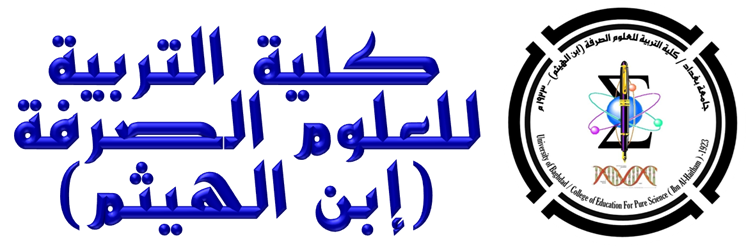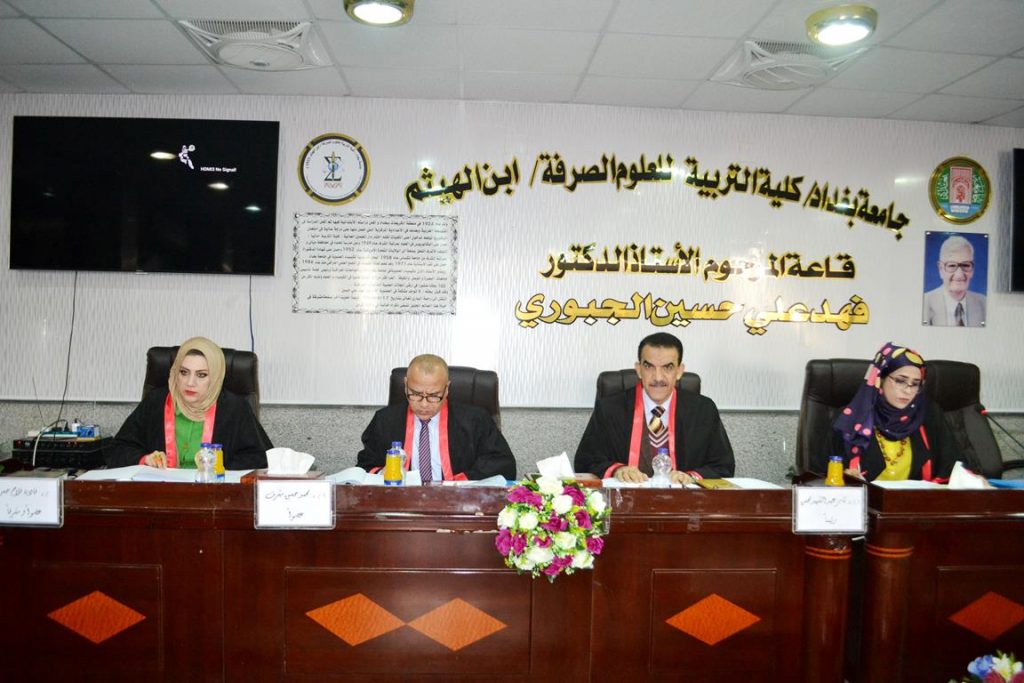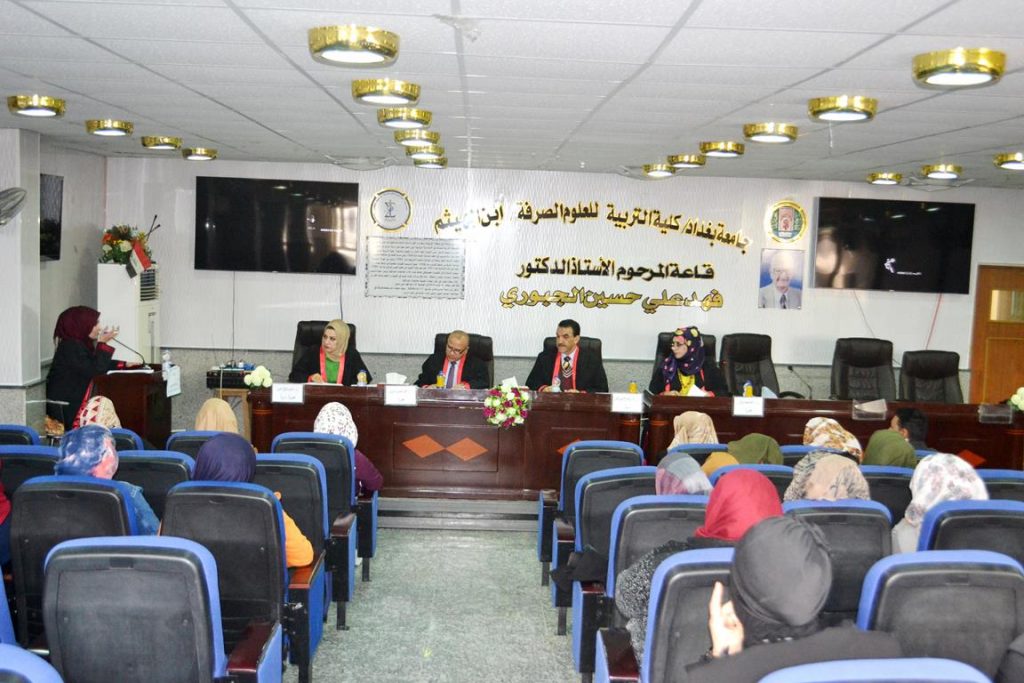جرت يوم الاثنين الموافق 31 / 12/ 2018 على قاعة المرحوم الدكتور أ.د. فهد علي حسين المناقشة العلنية لرسالة طالبة الماجستير رواء عماد جلود من قسم علوم الحياة و الموسومة :
الكشف عن aflatoxin B1 في لحوم الأغنام العراقية وازالة السمية بأستخدام بعض الطرق الفيزياوية
حيث تألفت لجنة المناقشة من التدريسيين الأفاضل :
أ.م.د.ثامر عبد الشهيد محسن رئيسا
أ.م.د. محمد حسين مشرف عضوا
أ.م.د. سمية نعيمة حوار عضوا
م.د. فادية فلاح حسن عضوا ومشرفا
أجريت الدراسة الحالية في كلية التربية للعلوم الصرفة ابن الهيثم /جامعة بغداد والتي شملت (73) عينة من لحوم الأغنام التي جمعت عشوائيا من مناطق الذبح المحلية والمجازر الحكومية المعتمدة في محافظة بغداد (الكرخ ، والرصافة)، وتمثلت ايضاً ب 50 عينة من لحوم الأغنام الطازجة المذبوحة حديثًا ( 25الكبد ، و25 عضلات الزند )، و ((13 عينة من اللحم المفروم و((12 عينة من الباسطرمة، حيث تم عزل وتشخيص الفطريات الموجودة في اللحوم , واستخدمت طريقتين للزرع هي طريقة الزرع المباشرة وغير المباشرة، وقد أظهرت نتائج طريقة الزرع المباشرة وجود اجناس
مختلفة من الفطريات والتي شملت Aspergillus spp.، Penicillium spp.، Rhizopus spp.، Mucor spp.، Cladosporium spp.، Fusarium spp.، Moniliella، Yeast spp.، حيث كان جنسAspergillus spp. هو الأكثر انتشاراً في جميع العينات.
اما طريقة الزرع غير المباشرة فكانت النتائج متمثلة بالاجناس التالية Aspergillus spp.، Penicillium spp.، Rhizopus spp.، Mucor spp.، Cladosporium spp.، Fusarium spp.، Moniliella spp.، Botrytis spp.، Trichothecium spp.، Ulocladium spp.، Yeast Spp، حيث كانت الخمائر هي الأكثر سيادة عدا العضلات حيث كان جنس Aspergillus spp. هو الاكثر سيادة في كلتا الطريقتين.
بينت نتائج الكشف عن aflatoxin B1 ان 71 من العينات ملوثة بالسم وبتراكيز مختلفة تراوحت من 42ppb-467ppb، 242ppb-459ppb، 25ppb-422ppb،65ppb-492ppb لكل من اللحم المفروم ، الباسطرمة ،العضلات والكبد على التوالي .
تمت عملية تحطيم السم للعينات الحاوية على اعلى تركيز باستعمال الاشعة الفوق البنفسجية لمسافتين (60 سم و 120سم) بين العينة ومصدر الاشعة ، ولوقتين 15دقيقة ، و 30دقيقة لكل مسافة وبينت النتائج وجود فرق معنوي (P<0.01) بين الوقتين باستخدام المسافة نفسها ، وايضا وجود فرق معنوي (P<0.01) بين المسافتين باستعمال الوقت نفسة ، وكانت افضل طريقة للتحطيم في البعد 60 سم لمدة 30 دقيقة , حيث اختزل السم في اللحم المفروم من 467 ppbالى 74.5 ppb، في الباسطرمة من 459 ppbالى 112 ppb، في الكبد من2ppb49 الى 100 ppb وفي اللحم من 422 ppb الى 102.5 ppb. اما طريقة الاوزون، تم استعمال الاوزون الجاف بتركيزين 2)غم و4غم) وايضا لوقتين5) و(10 دقائق لكل تركيز واظهرت النتائج وجود فروق معنوية P<0.01)) بين الوقتين للوزن نفسة ، وأيضا بين الوزنين للوقت نفسة ، وكانت الطريقة الأكفأ في خفض تركيز السم عند الوزن 4غم لمدة 10دقائق حيث انخفض تركيز السم في اللحم المفروم من 467ppb الى 12ppb، في الباسطرمة فقد انخفض من 459ppb الى 21,5ppb، وفي الكبد من 492ppbالى 22ppb، اما في اللحم من 422ppb الى 22,5ppb.
بينت نتائج الدراسة النسجية المرضية في الكبد عند تركيز(492ppb) يوجد تغلظ في النوى، تنكس مائي ، وتنخر، اما عند التركيز (467ppb) كانت هناك اضرار نسجية متمثلة بتغلظ النوى وزيادة في أعداد خلايا كبفر، وعند التركيز (65ppb) لم تكن هناك اية اضرار واضحة .
اما في العضلات فأظهرت النتائج ان تركيزي ((422ppb ، 384ppb)) كانت هناك اضرار نسيجية متمثلة بتجمع الحامض المتجانس، بينما في التركيز25ppb)) لم يكن هناك اي ضرر.
اوضحت نتائج الدراسة النسيجية المناعية للتراكيز نفسها لكل من الكبد والعضلات باستعمال الواسم المناعي TNF-α في الكبد عند التركيز492ppb)) كان هناك تعبير مناعي شديد (+++)، بينما كان التعبير المناعي (++) عند التركيز(467ppb)، ولم يكن هناك اي تعبير(-) عند التركيز(65ppb)، اما في العضلات فقد اظهرت النتائج ان العينات التي تحوي على تركيز 422 ppb)) كان التعبير المناعي (+++)، اما في التركيز(384 ppb) كان التعبير المناعي (++)، ولم يكن هناك اي تعبير في التركيز 25ppb)).













